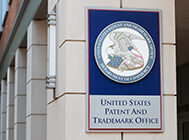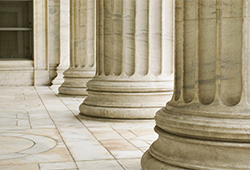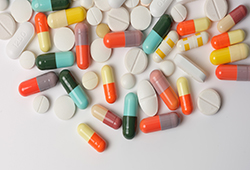K-Fee Provides a Warning to Life Sciences Companies – What You Say in Foreign Prosecution May Affect Your U.S. Claim Scope
 On December 26, 2023, the United States Court of Appeals for the Federal Circuit issued its decision in K-Fee System GMBH v. Nespresso USA, Inc. While nominally a case related to coffee makers, its teachings are highly applicable to life science companies as they tend to file large numbers of ex-U.S. patent cases. The lesson: under certain circumstances, a court may consider statements made in patent prosecution proceedings outside of the U.S. when construing the scope of related U.S. claims, and as such those statements should be carefully weighed against implications in your U.S. patent portfolio.
On December 26, 2023, the United States Court of Appeals for the Federal Circuit issued its decision in K-Fee System GMBH v. Nespresso USA, Inc. While nominally a case related to coffee makers, its teachings are highly applicable to life science companies as they tend to file large numbers of ex-U.S. patent cases. The lesson: under certain circumstances, a court may consider statements made in patent prosecution proceedings outside of the U.S. when construing the scope of related U.S. claims, and as such those statements should be carefully weighed against implications in your U.S. patent portfolio.
K-fee System GmbH (“K-fee”) owns U.S. Patent Nos. 10,858,176, 10,858,177, and 10,870,531. K-fee filed suit against Nespresso USA (“Nespresso”) in the Central District of California (“District Court”) alleging that Nespresso’s coffee system infringed claims in each of the three patents. Nespresso filed a motion for summary judgment of non-infringement, arguing that its products did not infringe the asserted patent claims. The District Court agreed and granted Nespresso’s motion for summary judgment. K-fee appealed to the Federal Circuit, which agreed with K-fee that the District Court erred in construing certain terms in the K-fee claims. The Federal Circuit remanded the case back to the District Court for further proceedings.
Previously, Nespresso had filed an opposition against a European patent related to the three U.S. patents K-fee asserted in its U.S. case. K-fee filed a motion asking the EPO to deny the opposition. K-fee argued that its claims were patentable over certain prior art cited by Nespresso based on the plain meaning of the term “barcode.” In its motion, K-fee provided what it alleged to be the plain meaning of that term. K-fee provided the opposition filings to the USPTO, including the motion containing this claim construction argument. The District Court and the Federal Circuit would both treat K-fee’s motion as intrinsic evidence as it had been made part of the U.S. file history by K-fee.
In deciding the motion for summary judgment in favor of Nespresso, the District Court referred to K-fee’s definition of barcode provided in the opposition filings. Accordingly, the District Court accepted Nespresso’s argument that its products fell outside of the asserted claims as interpreted according to the K-fee’s proffered definition. K-fee appealed to the Federal Circuit, arguing that the District Court’s narrowing of the term “barcode” was effectively a holding of disclaimer based on its prior arguments to the EPO, which, K-fee argued, did not meet the standard for disclaimer. In finding in favor of K-fee, the Federal Circuit held that the District Court’s conclusion regarding the definition of barcode based on K-fee’s EPO statements “was too confining,” agreeing with K-fee that its arguments to the EPO did not rise to the level of disclaimer. The case was again remanded to the District Court for further proceedings.
The Federal Circuit concluded its opinion by writing “we note that K-fee makes the legal argument that a conclusion of disclaimer cannot be premised on statements made when defending a related but distinct patent against a different legal standard—here the European standard for novelty. We do not address that contention because we have concluded that K-fee’s statements were too unclear to constitute disclaimer.”
 On January 16, 2024, the Patent Trial and Appeal Board (PTAB) of the United States Patent and Trademark Office issued a
On January 16, 2024, the Patent Trial and Appeal Board (PTAB) of the United States Patent and Trademark Office issued a  On October 10, 2023, the Enlarged Board of Appeal of the European Patent Office (EPO) issued a
On October 10, 2023, the Enlarged Board of Appeal of the European Patent Office (EPO) issued a  The U.S. Supreme Court has decided a closely watched case regarding patent law’s enablement requirement, Amgen Inc. v. Sanofi. The Supreme Court affirmed the Federal Circuit’s decision that Amgen’s patent claims were invalid, holding that the patents’ disclosures “offer[ed] persons skilled in the art little more than advice to engage in ‘trial and error.’”
The U.S. Supreme Court has decided a closely watched case regarding patent law’s enablement requirement, Amgen Inc. v. Sanofi. The Supreme Court affirmed the Federal Circuit’s decision that Amgen’s patent claims were invalid, holding that the patents’ disclosures “offer[ed] persons skilled in the art little more than advice to engage in ‘trial and error.’” The United States Patent & Trademark Office (USPTO or PTO) recently announced
The United States Patent & Trademark Office (USPTO or PTO) recently announced  In a letter dated March 21, 2023, the National Institutes of Health (“NIH”) again refused the request of petitioners to exercise march-in rights under the Bayh-Dole Act to control the price of a drug. Here, as before, the NIH found that the statutory criteria for the use of march-in rights were not satisfied by the petitioners.
In a letter dated March 21, 2023, the National Institutes of Health (“NIH”) again refused the request of petitioners to exercise march-in rights under the Bayh-Dole Act to control the price of a drug. Here, as before, the NIH found that the statutory criteria for the use of march-in rights were not satisfied by the petitioners. Director Katherine Vidal of the U.S. Patent and Trademark Office (“USPTO”) issued a precedential review decision with respect to the interpretation of multiple dependent claims, in a case of first impression before the Patent and Trial Appeal Board (“PTAB”). In the review of the PTAB’s final written Decision and Order, the Director modified it consistent with her determination of the treatment of multiple dependent claims, which are claims that refer to and incorporate by reference more than one other claim.
Director Katherine Vidal of the U.S. Patent and Trademark Office (“USPTO”) issued a precedential review decision with respect to the interpretation of multiple dependent claims, in a case of first impression before the Patent and Trial Appeal Board (“PTAB”). In the review of the PTAB’s final written Decision and Order, the Director modified it consistent with her determination of the treatment of multiple dependent claims, which are claims that refer to and incorporate by reference more than one other claim. The Unified Patent Court (“UPC”) is set to begin on June 1, 2023. Under the UPC framework, a single court proceeding could result in simultaneous revocation of European Patents across multiple European Union (“EU”) countries, including France and Germany.
The Unified Patent Court (“UPC”) is set to begin on June 1, 2023. Under the UPC framework, a single court proceeding could result in simultaneous revocation of European Patents across multiple European Union (“EU”) countries, including France and Germany. The U.S. Patent and Trademark Office (“USPTO”) published a Notice in the Federal Register announcing a new pilot program entitled, “Cancer Moonshot Expedited Examination Pilot Program” (the “Cancer Moonshot Program”) (87 Fed. Reg. 75608 (December 9, 2022)) (the “Notice”) to attempt to further accelerate innovation in the health and medical fields. Beginning on February 1, 2023, this new program will replace the Cancer Immunotherapy Pilot Program and expedite examination for a broader scope of technologies to prevent cancer and advance smoking cessation. The Cancer Moonshot Program is to support President Biden’s recently renewed Cancer Moonshot initiative, which set a new goal of reducing cancer death rate by at least 50% over the next 25 years.
The U.S. Patent and Trademark Office (“USPTO”) published a Notice in the Federal Register announcing a new pilot program entitled, “Cancer Moonshot Expedited Examination Pilot Program” (the “Cancer Moonshot Program”) (87 Fed. Reg. 75608 (December 9, 2022)) (the “Notice”) to attempt to further accelerate innovation in the health and medical fields. Beginning on February 1, 2023, this new program will replace the Cancer Immunotherapy Pilot Program and expedite examination for a broader scope of technologies to prevent cancer and advance smoking cessation. The Cancer Moonshot Program is to support President Biden’s recently renewed Cancer Moonshot initiative, which set a new goal of reducing cancer death rate by at least 50% over the next 25 years. After a recent reminder from the U.S. Patent and Trademark Office (USPTO) regarding the duties of disclosure and reasonable inquiry during examination of a patent application and a Request for Comments (RFC) on the USPTO initiatives to ensure “robustness and reliability” of patent rights,[1] the Director of the U.S. Patent and Trademark Office published a third notice in less than four months. The latest notice is in conjunction with the Food and Drug Administration (FDA) to further the discussion surrounding the patent practices of the pharmaceutical industry (
After a recent reminder from the U.S. Patent and Trademark Office (USPTO) regarding the duties of disclosure and reasonable inquiry during examination of a patent application and a Request for Comments (RFC) on the USPTO initiatives to ensure “robustness and reliability” of patent rights,[1] the Director of the U.S. Patent and Trademark Office published a third notice in less than four months. The latest notice is in conjunction with the Food and Drug Administration (FDA) to further the discussion surrounding the patent practices of the pharmaceutical industry (